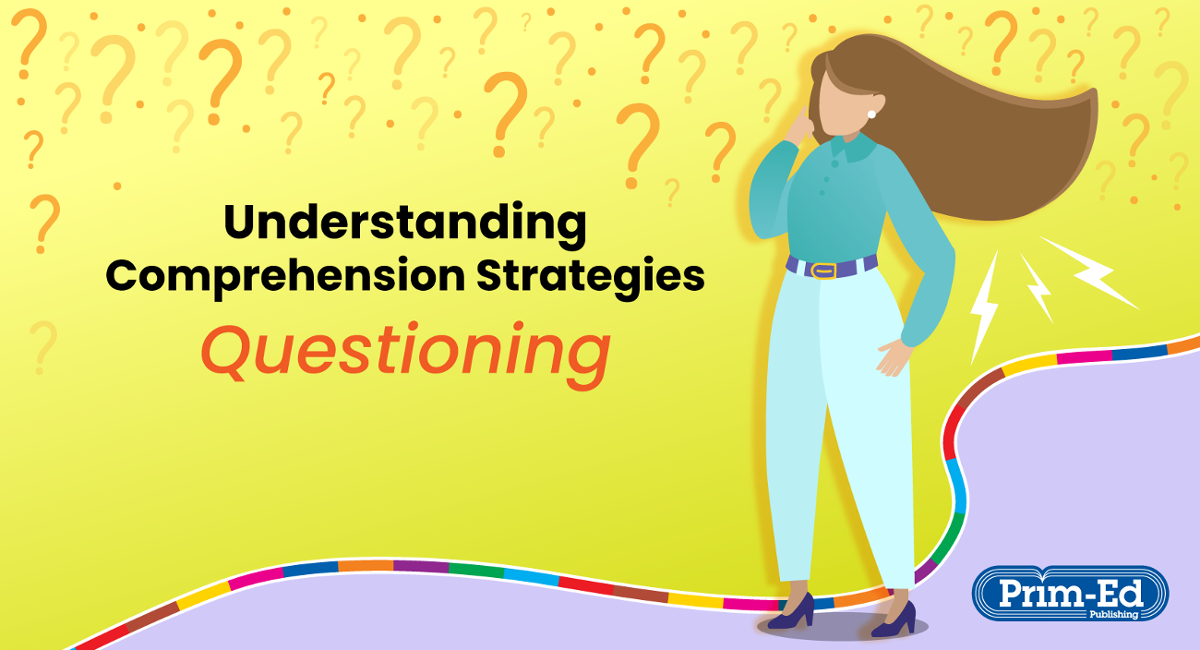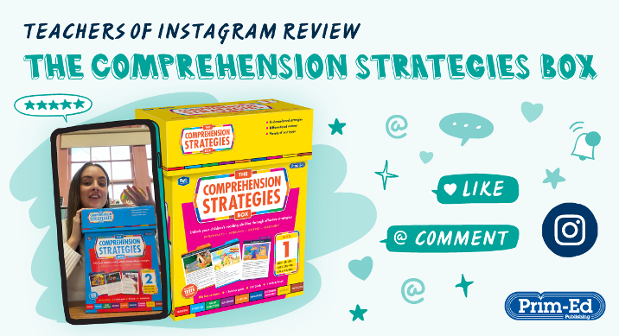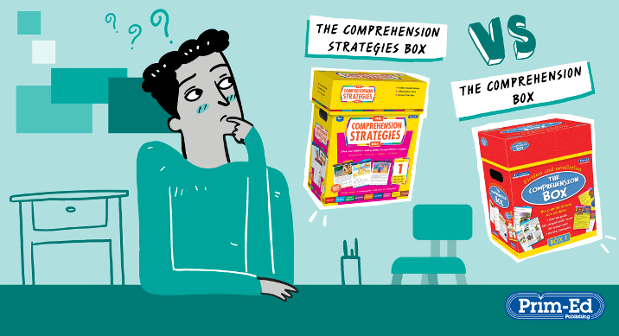- Wednesday 13 May 2020
Reading Comprehension Strategies – Questioning
The Questioning Reading Comprehension Strategy
Understanding what they read is one of the biggest difficulties a child will have while reading. It is therefore crucial that they are explicitly taught a range of strategies to encourage and master reading comprehension.
Questioning is one of many important reading strategies for children to learn and involves expressing, posing or answering questions to clarify what is read and develop a clear understanding of the text. Asking questions helps children to monitor their own comprehension as they read.
Asking and answering questions can operate at different levels of thinking and includes literal, influential and evaluative questions. Literal questions are often referred to as ‘in the book/right there’ questions, inferential questions are ‘think and search’ questions, and evaluative questions are referred to as ‘in my head’ questions.
Questions can be asked for a variety of reasons; for example, to clarify the meaning of words or events, to better understand the plot or characters, and to make predictions about what will happen next.
Questioning should occur before, during and after reading to help the reader fully understand the text.
Before reading
Questions will relate to the illustration, the title and/or the blurb. Questions can be asked about what the story/text may be about, what they might learn and what they already know about the subject.
During reading
Questions will relate to information the children have read, the meaning of words, what the paragraphs are about, how ideas relate to each other, what has happened so far, and so on. All children have different prior experiences and background knowledge, so different children will ask different things about the text. As children read, they will think of different questions, as some will get answered as the text progresses and new questions will be thought of.
After reading
Questions may relate to how the story ends, the main idea, personal opinions of characters, what happened to characters, and so on. After reading, children should evaluate their questions, thinking about how their questions were answered and what they learned.
Questioning in the Classroom
Teachers can develop children’s questioning skills and therefore their ability to comprehend texts in a variety of ways.
The children can answer oral questions about their environment, objects or images. Their answers can be single words or phrases. They can progress to oral questions relating to sorting objects into groups, and describing pictures or objects. This time, their answers will be in sentences.
The question words ‘who’, ‘what’ and ‘where’ should be displayed for the children. They should orally ask ‘who’, what’ and ‘where’ questions about images. They should then listen to, or have read to them, a short passage of text. The teacher should ask them to orally answer ‘who’, ‘what’ and ‘where’ questions about the text. These oral activities can then be repeated using the question words ‘when’, ‘how’ and ‘why’.
Once the children have experience of answering questions orally, encourage them to give written answers to literal ‘who’, ‘what’, ‘where’, ‘when’, ‘how’ and ‘why’ questions, after reading a sentence, paragraph or short text. After the children become proficient at answering literal questions they should progress to inferential and evaluative questions.
Children should be encouraged to ask questions when reading a range of genre. Fiction texts tend to generate questions about settings, characters and plots. However, non-fiction texts might encourage questions about new vocabulary or what they are trying to learn.
Templates could be used to help children record their questions in an organised way. These should have space for children to work on ‘who’, ‘what’, ‘where’, ‘when’, ‘how’ and ‘why’ questions. They could also be encouraged to record answers to questions before, during and after reading.
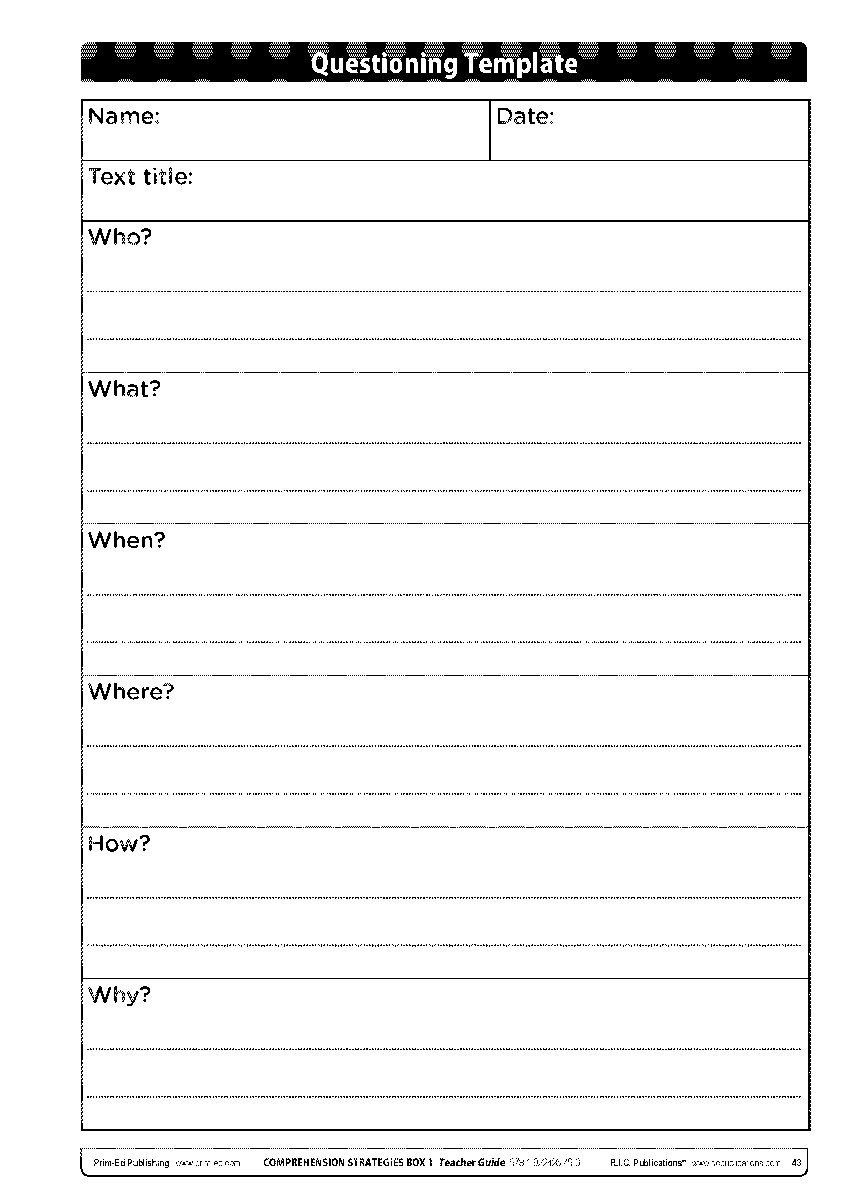
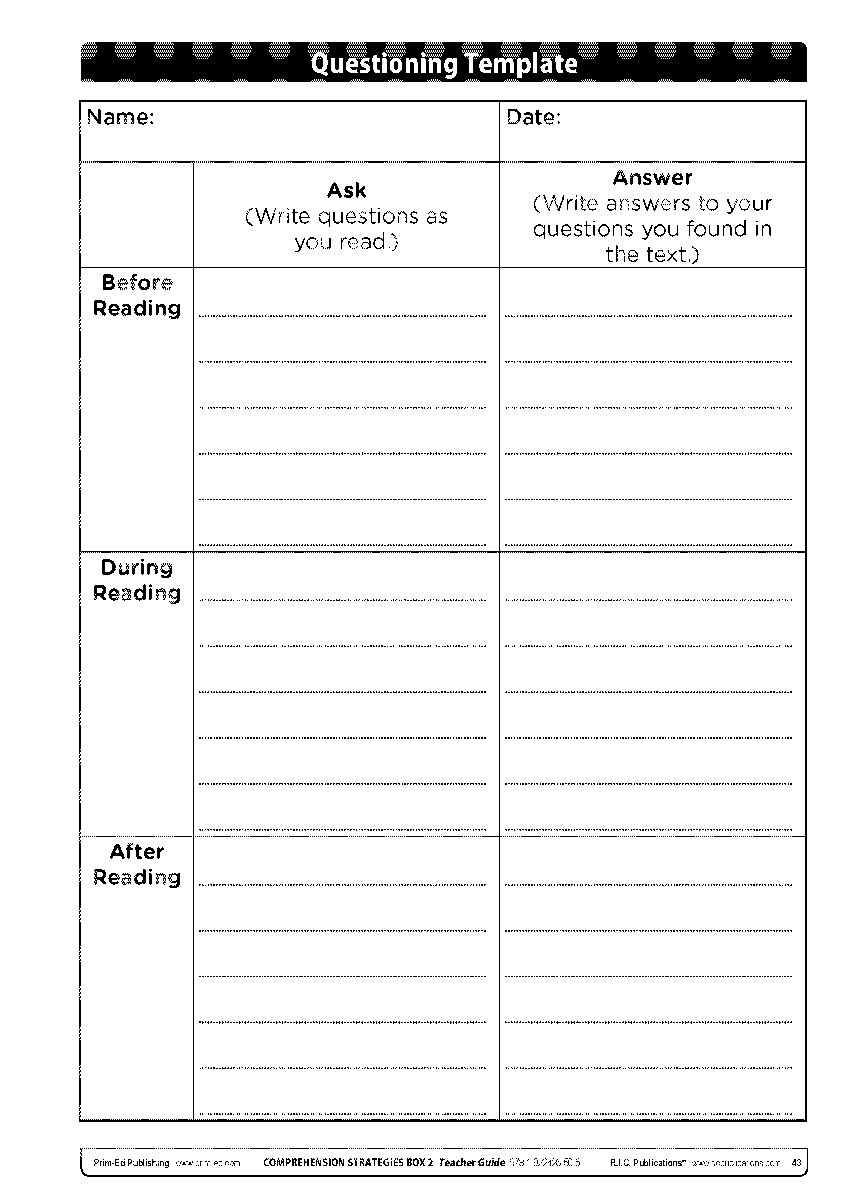
Templates from Teacher Guides in The Comprehension Strategies Box series.
Questioning in The Comprehension Strategies Box
Questioning is the fourth of nine reading comprehension strategies covered in the The Comprehension Strategies Box series. This boxed series, written at six levels for the six main primary school years, consists of full-colour, differentiated, fiction and non-fiction reading cards which cover nine different comprehension strategies, a comprehensive teacher guide that explains the strategies and how to use the series, and an activity book with photocopiable activities to enable children to focus on and practise each strategy.
Each reading strategy is introduced in the teacher guide, with a page of background information for teachers to familiarise themselves with.
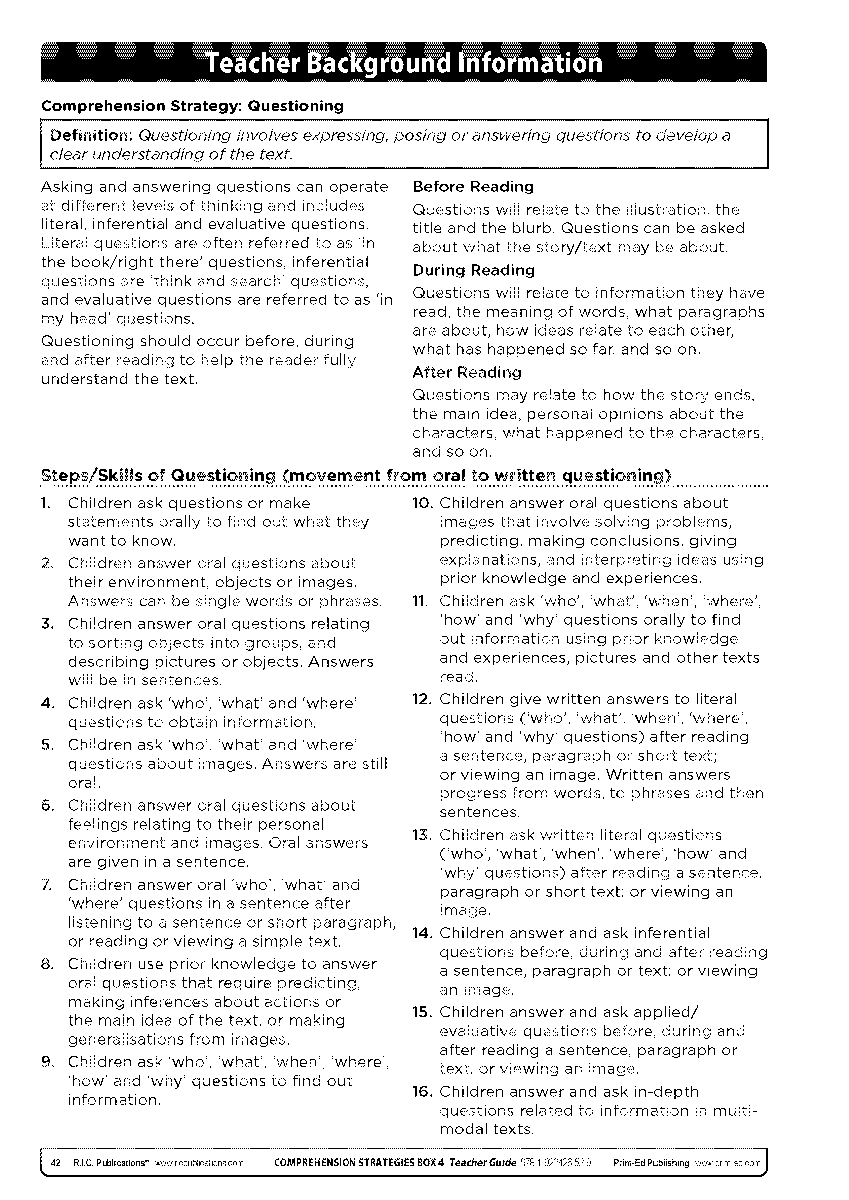
Sample page from Teacher Guide 4 in The Comprehension Strategies Box series.
The teacher should use the modelling text provided to introduce and demonstrate the questioning comprehension strategy to their class. The illustrated text should be displayed onto an interactive whiteboard, to enable the teacher to conceal and reveal parts of the text to the children, and highlight text and add annotations as appropriate. The steps the teacher should go through to model and teach the strategy are clearly laid out in the teacher notes. The modelling is oral and includes what the teacher should say at various stages of reading the text; for example, the title, the first paragraph, and so on. To start, the strategy is explained, before the children are directed to look at the illustration and answer questions about it. Children are then asked questions about the title, before reading the text and being asked questions at various points, to enable them to better understand it. The questions to be modelled are a variety of literal, inferential and evaluative questions.
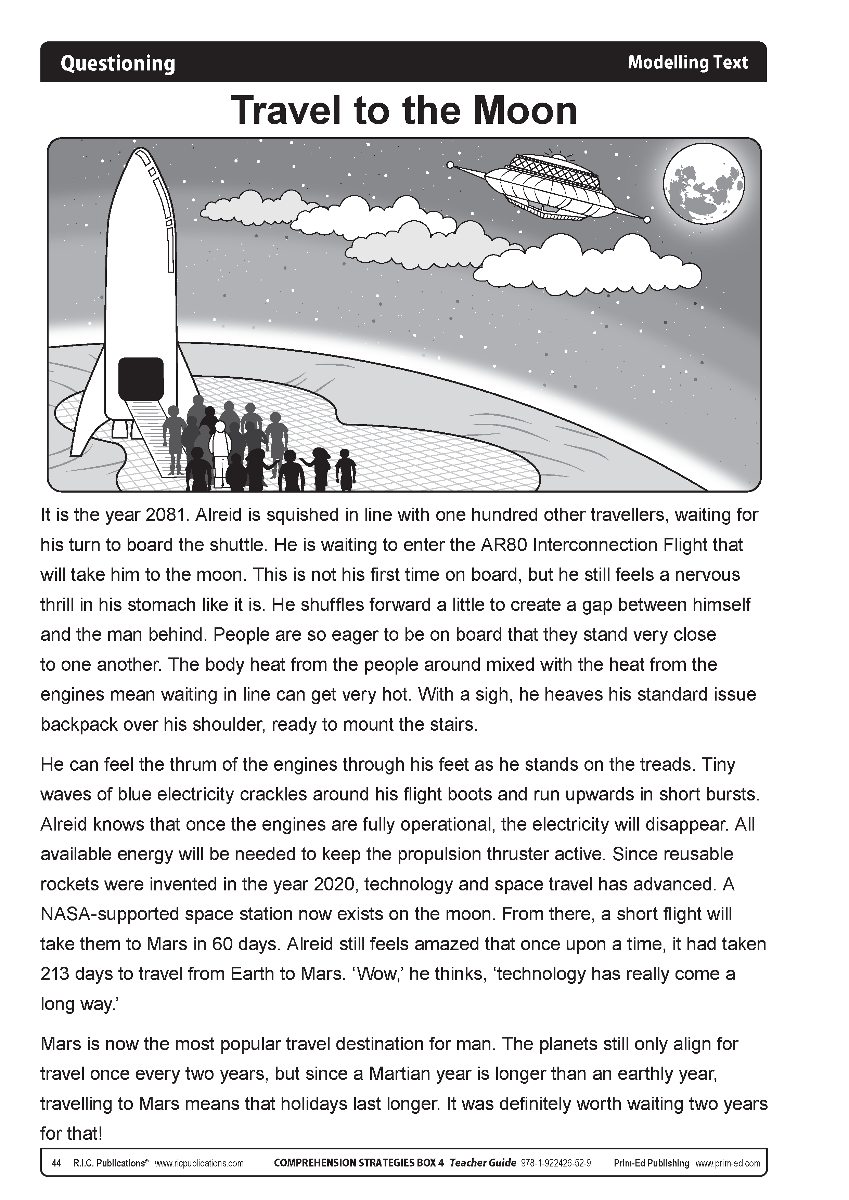
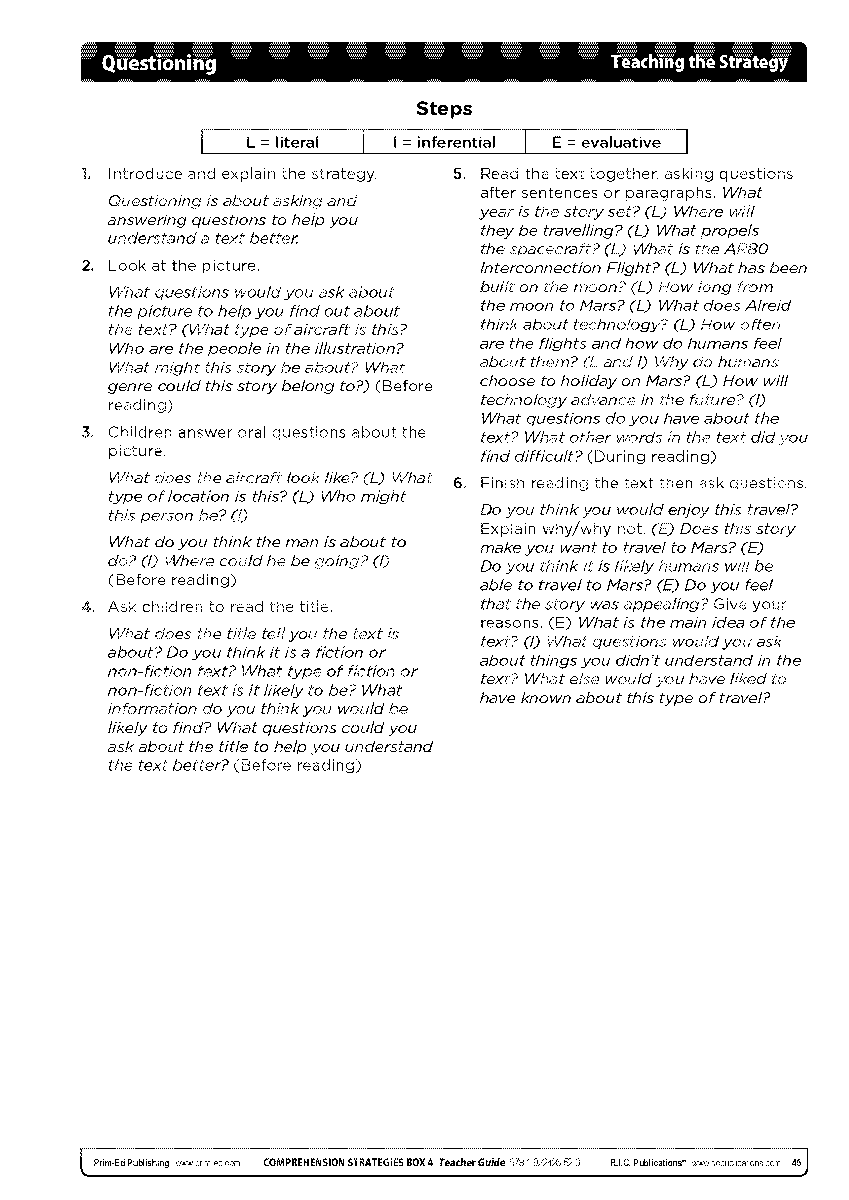


Sample pages from Teacher Guide 4 in The Comprehension Strategies Box series.
In a similar way to how the modelling text was presented and used with the class, the teacher should then present the sharing text. This can either be another oral activity or children may work with each other to answer the questions and practise the strategy together.
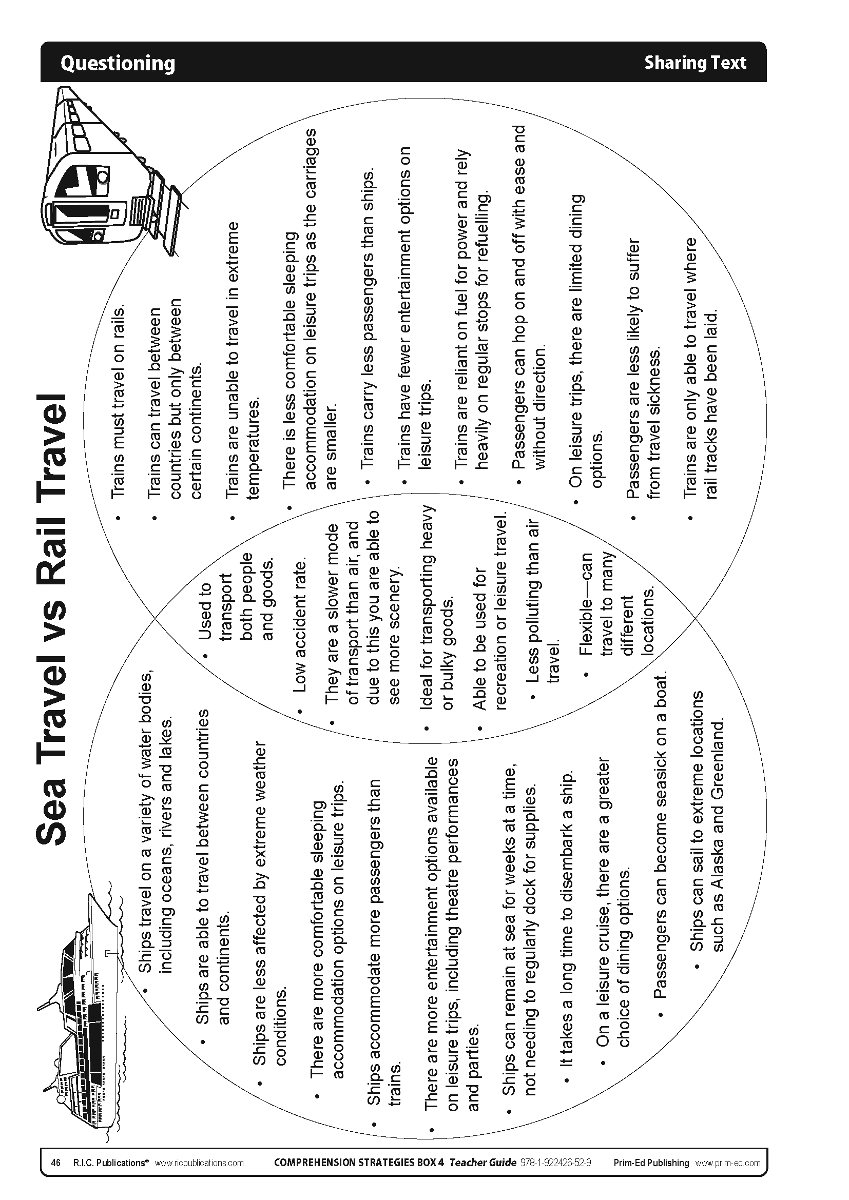
.png)

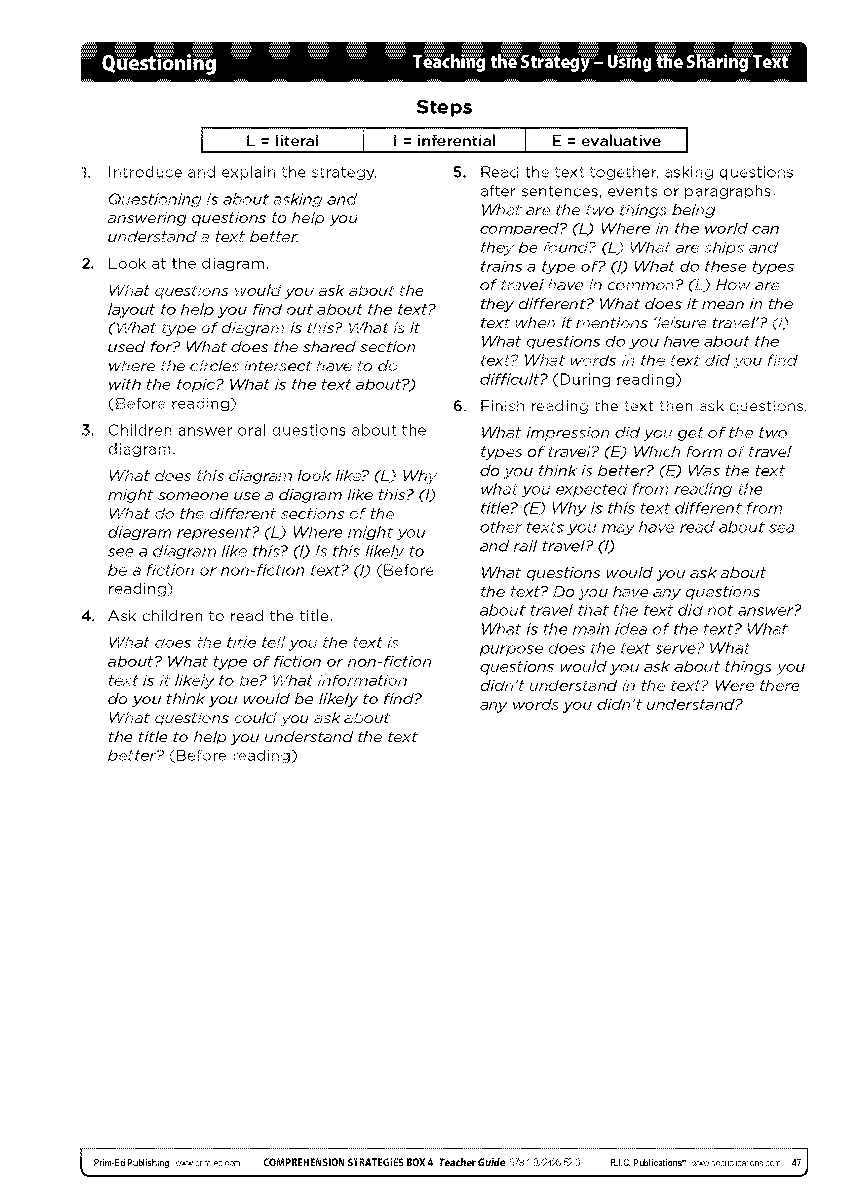
Sample pages from Teacher Guide 4 in The Comprehension Strategies Box series.
The children can then work on some of the activity cards, either individually, in pairs or in small groups. The teacher should select a particular level of card (1, 2 or 3), depending on the reading level of the child or group. A placement test is provided to help with this. There are two texts on each card, so children can practise the questioning strategy using more than one text. The children should use the corresponding resource sheets in the activity book which pose questions and activities that children will need to use questioning skills to answer.
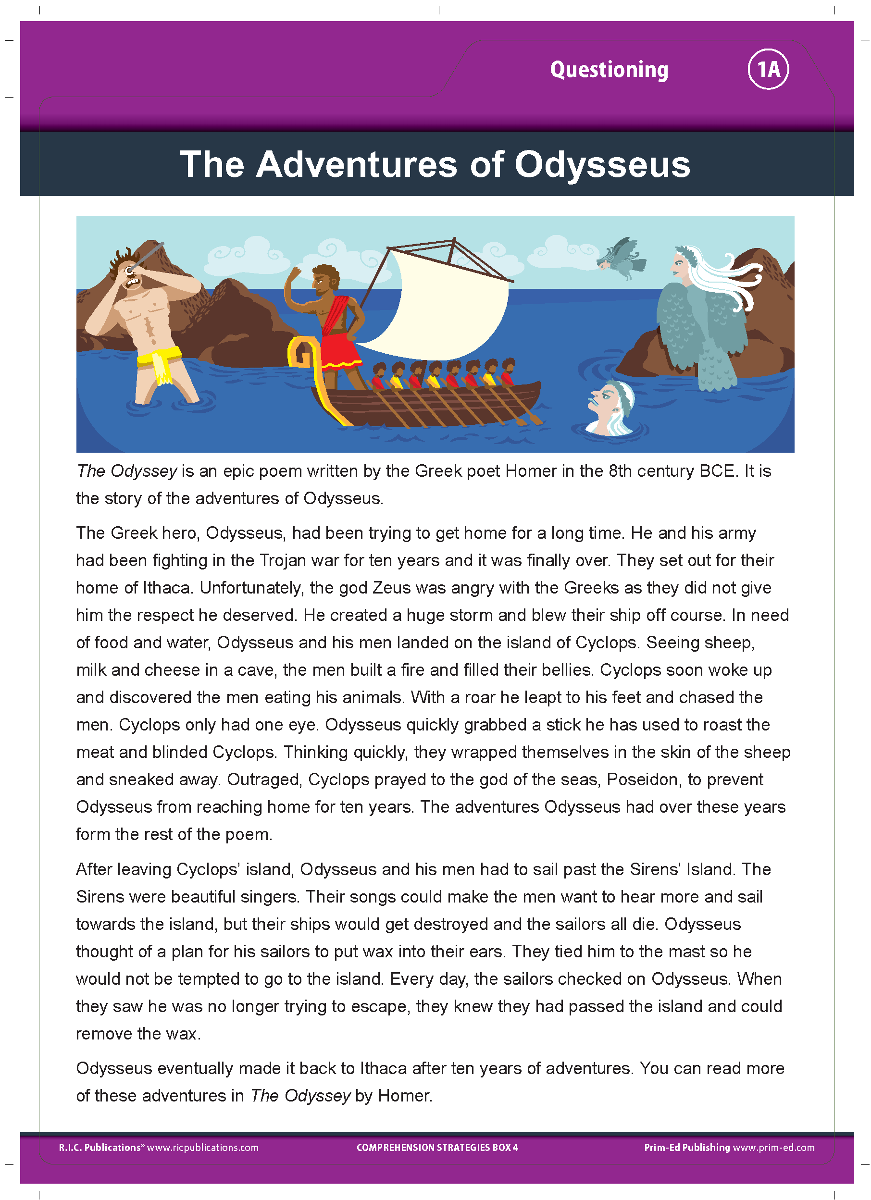
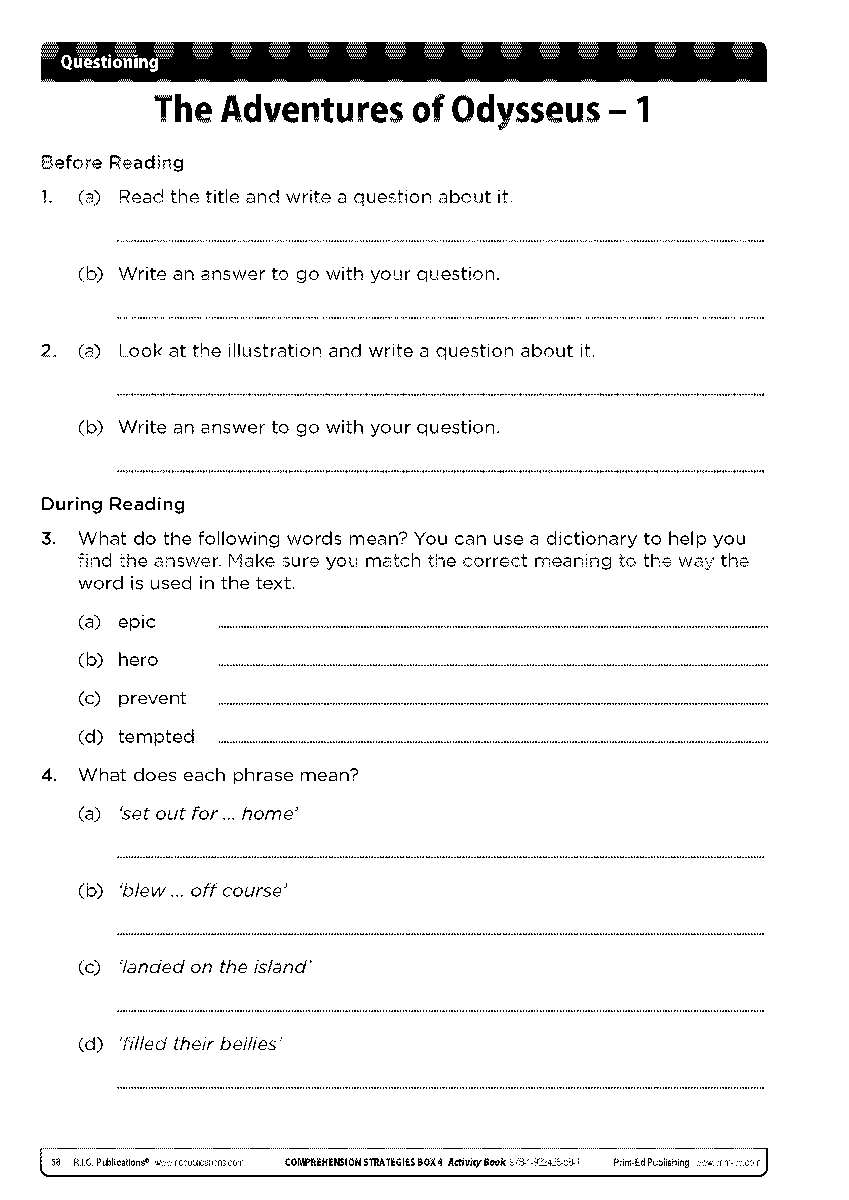
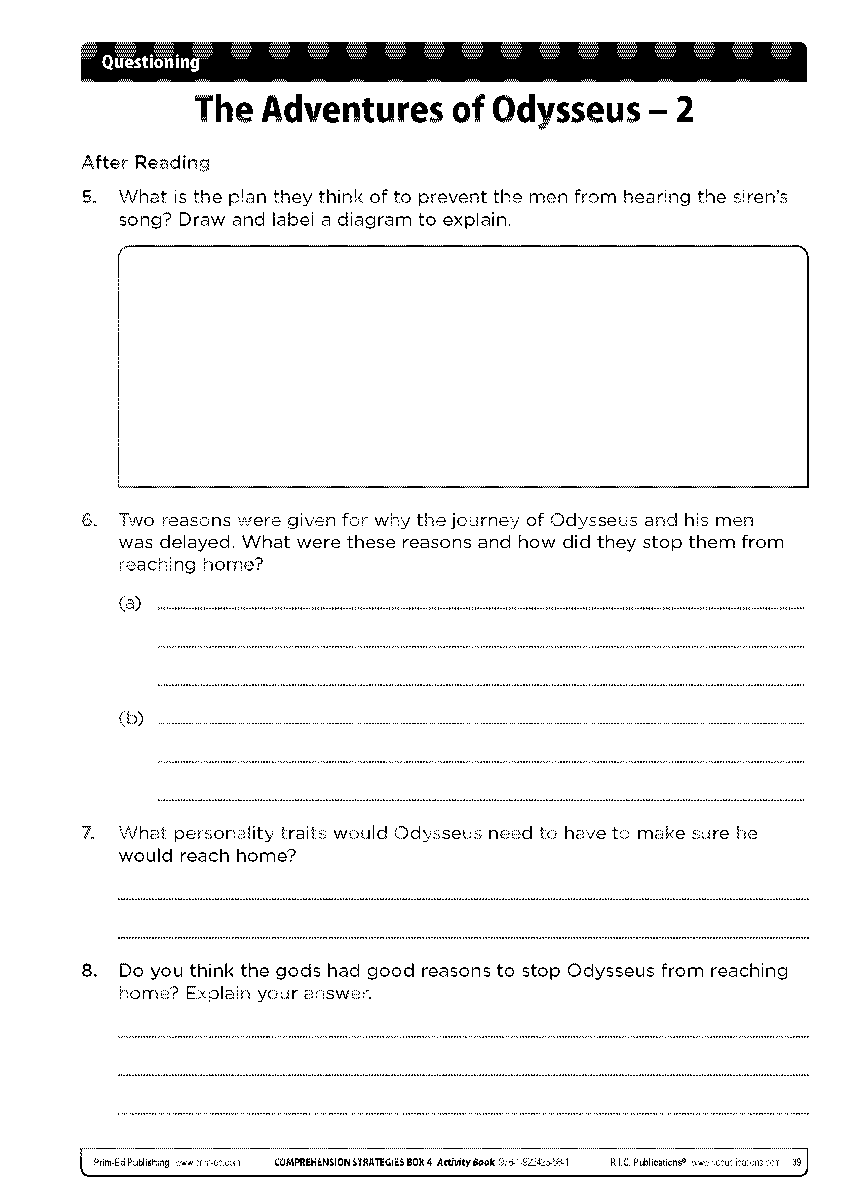



Card and sample pages from Activity Book in The Comprehension Strategies Box 4.
The teacher can use the assessment text in the teacher guide and the corresponding assessment questions to assess how well each child has understood and can use the questioning comprehension strategy.
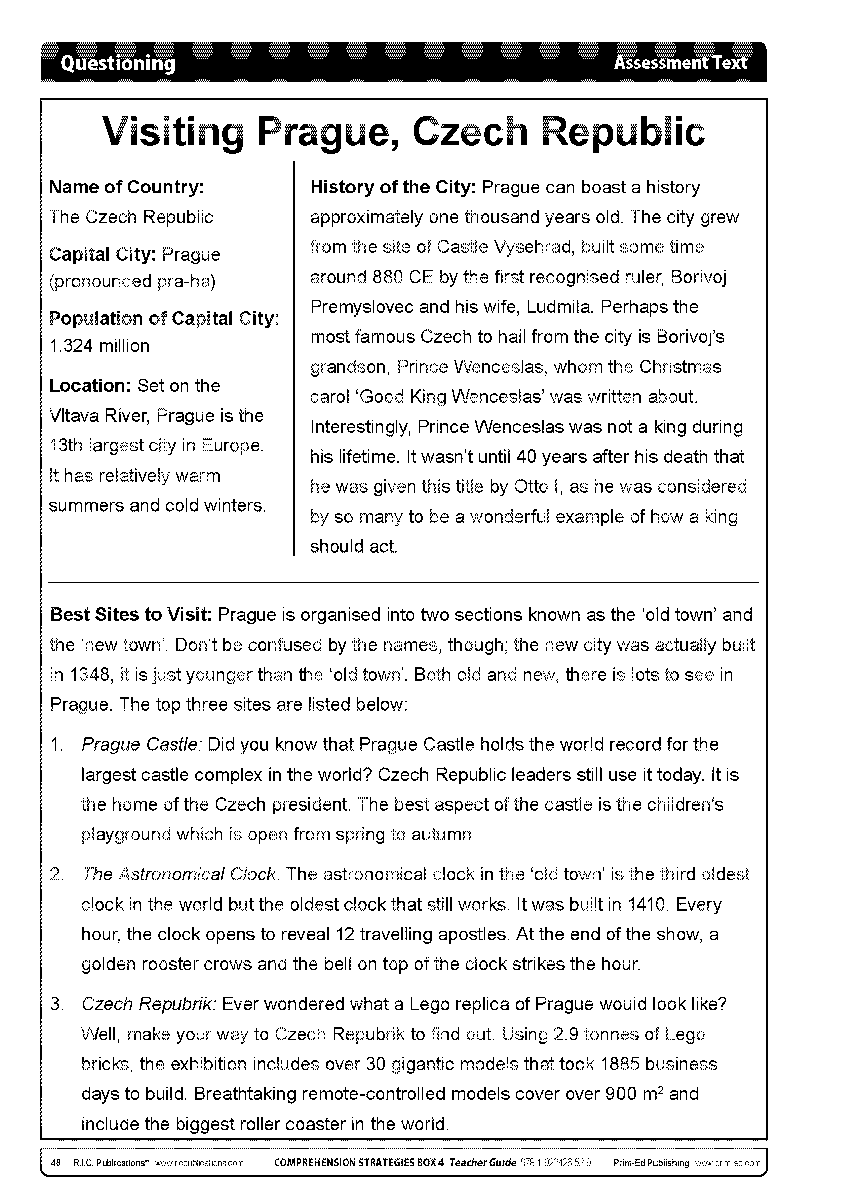
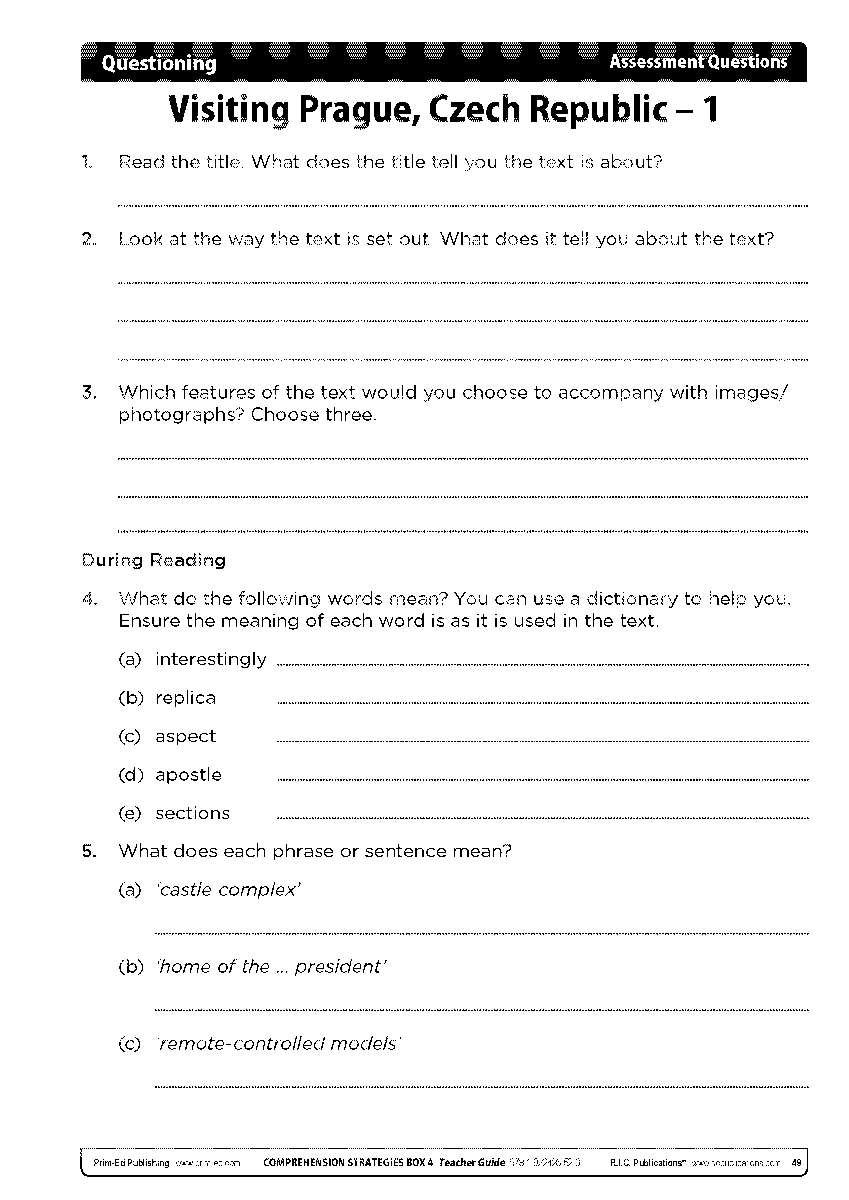
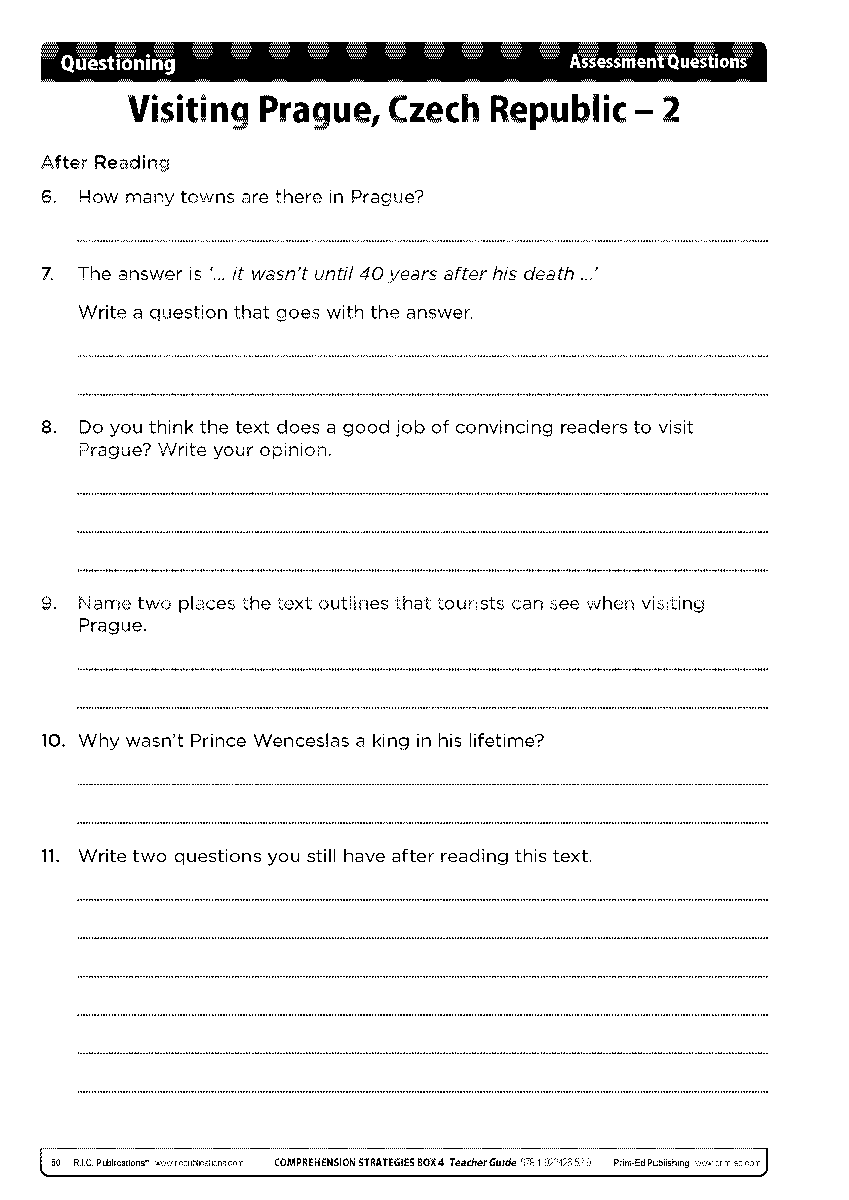



Sample pages from Teacher Guide 4 in The Comprehension Strategies Box series.
More Information About The Comprehension Strategies Box:
For further information about The Comprehension Strategies Box and to view sample cards and pages from other levels, check out the series page here.
